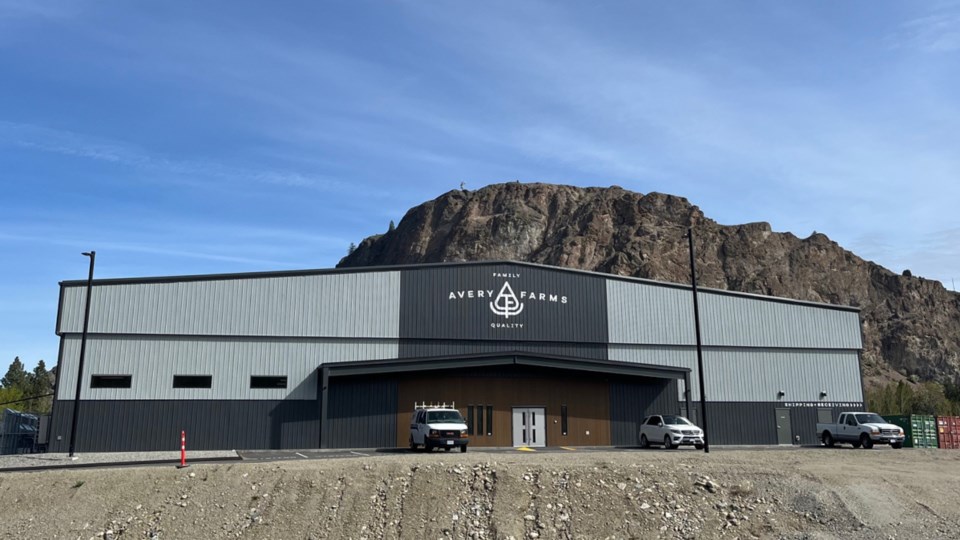Demand for industrial space in B.C.’s southern Interior has developers breaking ground in new communities this summer.
This month marks the launch of the most recent, Avery Business Park in Okanagan Falls, a 114-acre project on the former Weyerhaeuser mill site.
“With the shortage of industrial land throughout the Okanagan, this site has the potential to become the new industrial hub of the South Okanagan,” said Lee Levering, a partner with Kelowna real estate brokerage Venture Commercial, who is marketing the site with fellow broker Jason Wills.
Levering expects the site to attract interest from across the Okanagan Valley and beyond when marketing kicks off this week.
“The first groups to go into this new park will probably be more so on the owner-occupier side, and as we get some density built out of the park and there’s more activity, more jobs, more population there, we might see interest from industrial developers to build for-market lease product,” Levering said.
The first occupant of the park is Avery Family Farms, a vertical farming venture of the park’s owners. Japanese-inspired precision farming gives the 50,000-square-foot facility has the ability to produce upward of 10,000 heads of lettuce a day.
“The owners not only wanted to develop this for the building model of vertical farming, but also to kick off the business park,” Levering said. “It’s a nice piece to have to show that there’s already something happening on site.”
Plenty has been happening on site since 2019, however. Servicing completed this spring after four years of work, slowed only by the pandemic.
Meanwhile, the Kelowna industrial market boomed, with land values peaking at $3 million an acre in 2022 before falling back to $2.5 million an acre today. This initially pushed activity north to Lake Country, but now demand is moving south.
“We’re going to see the same thing in the southern Okanagan, where industrial buyers, tenants are going to have accept the fact that they’re going to have to travel a little further,” Wills said, noting Okanagan Falls is as far from Penticton as Lake Country is from Kelowna.
The impetus to move south may be even greater, as Penticton has long been a tight market with little lease space and few new options. The market has only become tighter following the sale of 1704 Government Street last fall, home to 110,000 square feet of space, for mixed-use development.
“There’s opportunities for growth in this region, and it’s similar to when we saw the industrial market in Lake Country blow up,” Levering said, noting that Okanagan Falls is strategically located just off Hwy 97 an hour north of the U.S. border as well as between Hwy 3 and Hwy 97C.
Comet Industries Ltd.’s planned Iron Mask Industrial Park in Kamloops is larger at 140 acres, but 18 months of site servicing and preparation lie ahead before the first lots come to market.
In addition, the site’s location along Hwy 1 positions it to cater to a different segment of users than those targeting the South Okanagan.
Both projects, as well as ongoing development in the Central Okanagan, will contribute to a rebalancing of the industrial market in the region. Vacancies averaged 2.8 per cent last summer on an inventory of 13.45 million square feet, according to Colliers International, and preliminary estimates indicate a current vacancy rate in the range of four per cent.
Significant population growth in both Kamloops and Penticton means there’s also a growing workforce at hand for new jobs space. Kamloops anticipates 46.5 per cent population growth by 2046 while Penticton is expected to grow 37 per cent by 2046 on the back of nine per cent growth over the past five years.
“We do expect the majority of the employment at the park to come from the Penticton market,” Levering said.
A lower cost of living is helping to attract a younger pool of workers.
“It’s more affordable than the Lower Mainland,” said Jamie Squires, president of Fifth Avenue Real Estate Marketing Ltd., which is handling marketing of Sokana, a new residential development in the city.
Housing is a key challenge, however.
“People want to come here, people want to work here, we do have the jobs but they’ve got no place to live so we can’t hire them,” said Charan Sethi, recalling a comment made at the rezoning hearing for 1704 Government Street, where his company Tien Sher plans a mixed-use development with an estimated 1,500 homes when fully built out.
Penticton has set a target of 240 to 380 units a year in the short term to meet demand.




